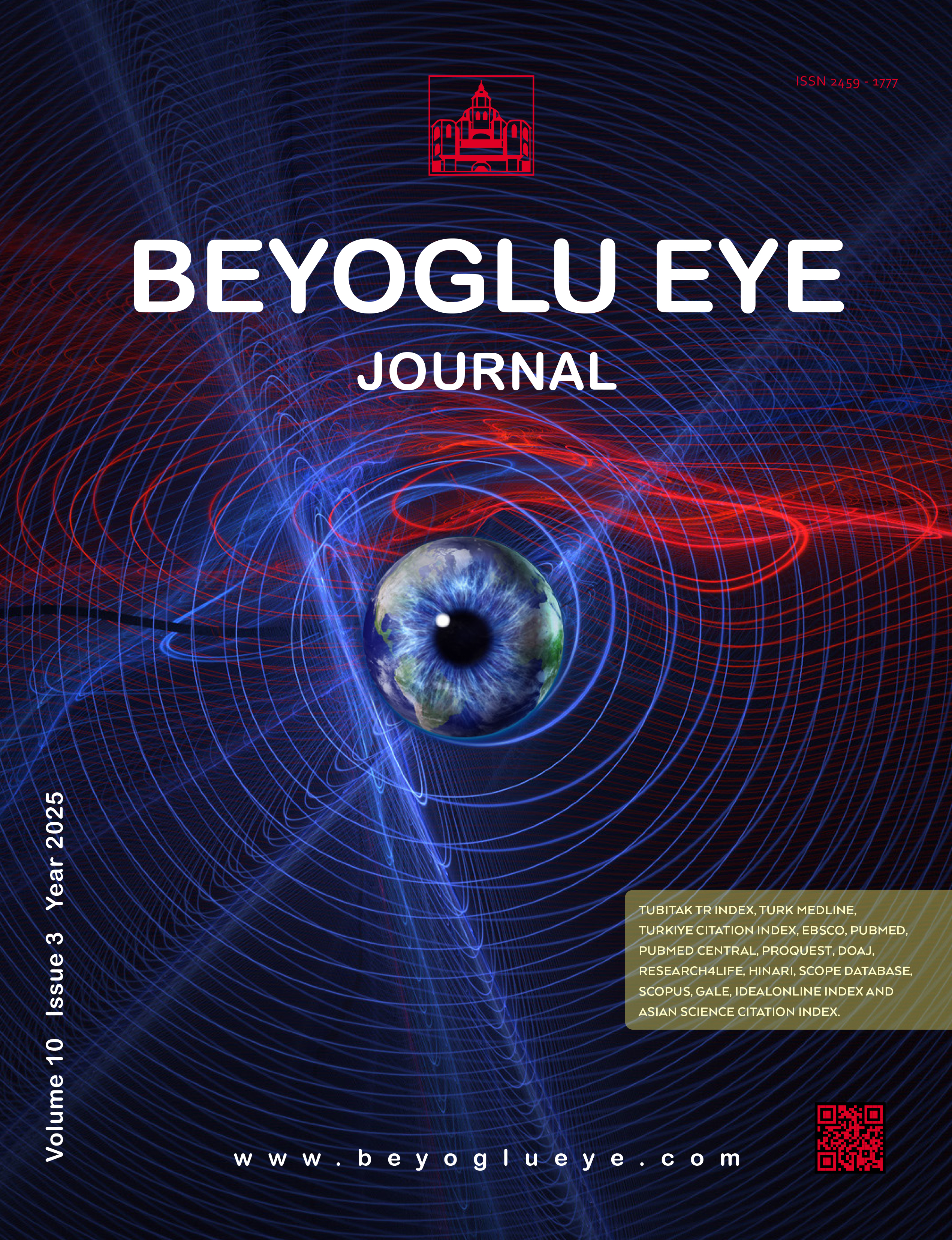
Comparison of Toric Intraocular Lens Alignment Using Image-Guided System and Manual Marking Technique
Bulent Kose1, Hakika Erdogan21Department of Ophthalmology, Aritmi Osmangazi Hospital, Bursa, Turkey2Department of Ophthalmology, Maltepe University Faculty of Medicine, Istanbul, Turkey
INTRODUCTION: The aim of this study was to compare the accuracy of an image-guided system (Callisto eye; Carl Zeiss, Oberkochen, Germany) with the manual marking technique in the positioning of a toric intraocular lens (IOL).
METHODS: A total of 80 eyes of 80 patients who underwent cataract surgery with a monofocal, single-piece, hydrophobic, biconvex, toric, aspheric IOL (Acrysof IQ SN6AT, Alcon Laboratories, Inc., Fort Worth, TX, USA) implantation were included. Before surgery, all of the patients underwent a complete eye examination that included evaluation of uncorrected (UCVA) and corrected distance visual acuity (CDVA), spherical equivalent (SE), astigmatic refraction (AR), keratometry, biometry, as well as meridian registration with the IOLMaster 700 (Carl Zeiss, Oberkochen, Germany), slit lamp examination, intraocular pressure measurement, and dilated retinal examination. The diopter of the toric IOL was calculated with an online calculator (Alcon, Fort Worth, TX, USA). At 3 months post surgery, the UCVA, CDVA, SE, and residual astigmatism were recorded, and the pupils of all of the patients were fully dilated to determine the toric IOL marker positions.
RESULTS: Group 1, the Callisto eye system group, comprised 45 eyes, and Group 2, the manual marking technique group, was composed of 35 eyes. The preoperative values of both groups were statistically similar in terms of the SE, corneal cylinder, axial length, logMAR UDVA, and logMAR CDVA. At postoperative 3 months, there were no significant differences between the 2 groups in the logMAR UDVA, logMAR CDVA, degree of misalignment of toric IOL, or mean deviation from target-induced astigmatism values. The mean deviation degree from the intended axis was 2.04±1.84 in the Callisto eye system group (Group 1) and 3.24±2.64 in the manual marking technique group (Group 2). However, this difference did not have any effect on the logMAR UDVA.
DISCUSSION AND CONCLUSION: The image-guided markerless system was found to be as effective as manual marking in the positioning of toric IOLs.
Manuscript Language: English









